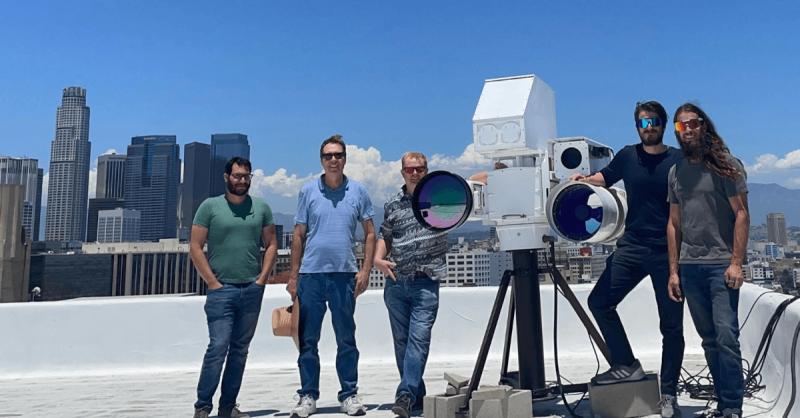The US Department of Defense (DoD) Defense Innovation Unit (DIU) is helping to develop a prototype AI-based visual recognition and identification system with increased performance capability compared to the legacy system while reducing projected sustainment costs, says the agency.
The timeline for fielding the improved integrated camera system has accelerated by several years due to a critical USD16.77M funding award via the Accelerate the Procurement and Fielding of Innovative Technologies (APFIT) in May of this year.
After an 18-month prototype that concluded after reaching a final decision in April 2023, Teleidoscope, a first-time, non-traditional DOD vendor has been awarded a USD100M ceiling production contract with orders of the system already in progress.
Teleidoscope is a California based company that provides complete tracking, targeting, autonomy and imaging systems, originally focusing on, and supporting customers in the commercial augmented reality sector. Teleidoscope specializes in advanced tracking, targeting and autonomy software, and integrating this with platforms and sensors, including EO/IR, radar amongst others.
DIU’s prototype process and APFIT funding allows the Program Executive Office for Digital to field the update, and to procure the majority of the required cameras and AI/ML systems in FY23 for the Joint Air Defense Operations Center enhancing surveillance, identification, and tracking capabilities.
The new systems leverage commercial market advancements in cameras, computer vision, augmented reality and machine learning, to greatly improve the air defense operator’s ability to detect, identify and track aircraft.
The NCR-IADS modernization effort focuses on upgrading the cameras and eye-safe lasers used for tracking and visually warning aircraft in violation of the special flight rules within the NCR. The updates significantly improve air defense operators’ ability to positively identify aircraft and aim warning lasers at much further ranges.
The auto-tracking capabilities of the system are applicable to full-motion-video feeds, regardless of the domain, opening the door to augment remotely piloted aircraft video feed tracking capabilities. This prototype has the potential to run on any edge device, or cloud-provided full-motion video feed.
The technology has broad national defense applicability across the Services for both defense against asymmetric and near-peer threats like UAS and cruise missiles.
Lt. Col. Kurtis Engelson, US Air Force and the materiel lead for Battle Control Systems said: “The leadership and support from DIU’s top-notch acquisition professionals has been instrumental in the prototyping effort for the camera and visual warning system – and…we’re looking forward to the next stage advancing past prototyping to production of the new systems with Teleidoscope.”
Th3 transition into production has been made possible by the vote of confidence from the Director of OSD R&E and the USD16.7M APFIT funds, added Engelson. “These funds are paramount to our ability to field sharper “eyes” for the NCR’s air defenders on the earliest timetable possible.”
The Defense Innovation Unit (DIU) aims to field and scale commercial technology across the U.S. military at commercial speeds. With offices in Silicon Valley, Boston, Austin, Chicago and inside the Pentagon, DIU is the Department’s gateway to leading technology companies across the country.
(Image: Teleidoscope team demonstrating upgraded electro optical/infrared cameras with enhanced capabilities to improve airspace awareness, California, 2022)
For more information visit:




